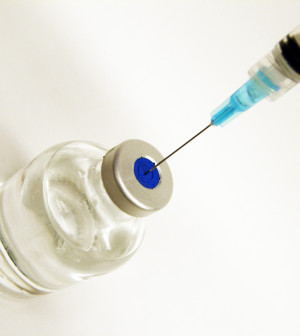- Skip Storing This Everyday Product in the Fridge Door
- Green Tea + B3 Pairing May Boost Brain Health
- Navigating Your Midlife Crisis: Embracing New Possibilities
- City Raccoons Showing Signs of Domestication
- Mapping the Exposome: Science Broadens Focus to Environmental Disease Triggers
- One Week Less on Social Media Linked to Better Mental Health
- Your Brain Changes in Stages as You Age, Study Finds
- Some Suicide Victims Show No Typical Warning Signs, Study Finds
- ByHeart Formula Faces Lawsuits After Babies Sickened With Botulism
- Switch to Vegan Diet Could Cut Your Greenhouse Gas Emissions in Half
Bigger Breasts, Lack of Exercise Tied to Breast Cancer Mortality


If a woman develops breast cancer, having larger breasts and being sedentary might increase her risk of dying from the disease, a large, long-term study suggests.
Experts have long known that being physically active reduces the risk of getting breast cancer by about 25 percent. The new study, however, looked at how both exercise and breast size might predict survival if breast cancer does develop, said study researcher Paul Williams, a staff scientist at the Lawrence Berkeley National Laboratory, in Berkeley, Calif.
Williams found a roughly 40 percent reduced risk of dying from breast cancer in physically active women compared to those who didn’t meet exercise guidelines.
The study was published online Dec. 9 in the journal PLoS One.
For the study, Williams and his team followed nearly 80,000 women for 11 years. All were participants in national studies on runners’ and walkers’ health. About 33,000 of the women were walkers and about 46,000 were runners.
When they entered the study, none of the women had been diagnosed with breast cancer. All reported the distances they walked or ran each week, as well as their bra cup size and body weight and height.
During the 11-year follow-up period, 111 study participants died from breast cancer. They were in their mid-50s, on average, when they died.
Those who met current exercise guidelines were about 42 percent less likely to die of breast cancer compared to those who did not meet the guidelines. These guidelines recommend two and a half hours of moderate activity, an hour and 15 minutes of vigorous activity or an equivalent combination weekly.
The amount of exercise found to be protective against breast cancer was about seven miles of brisk walking or nearly five miles of running each week. “It’s not a lot of exercise,” Williams said.
“This is more evidence of yet another benefit of exercise,” Williams said. “We didn’t seem to find a difference between walking and running.”
Women pressed for time might opt for running over walking, Williams said. “You need to walk about 50 percent farther to burn the same amount of calories [as running],” he said. For the study, brisk walking was defined as a pace of about 3.5 miles per hour.
Although the study found a link between meeting exercise guidelines and lower risk of dying of breast cancer, it did not establish a cause-and-effect relationship.
Because previous research has produced mixed results about larger breast size and breast cancer death risk, with some studies showing a link and others not, Williams also looked at that.
“We saw a strong relationship,” he said. He found that those women with a C cup had four times the risk of breast cancer death compared to those with an A cup. Those with a D cup or larger had nearly five times the risk of the A-cup women.
Again, the study found an association but not a cause-and-effect relationship between cup size and risk of breast cancer death.
Having higher estrogen levels is a known risk factor for breast cancer, Williams said. Larger-breasted women have been shown to have higher estrogen levels than smaller-breasted women if they have narrow waists but not if they have wider waists, he said. Narrow waists are more likely to be found on physically active women than sedentary ones.
Another expert found the results encouraging for women who are only moderately active.
“The nice message here is that you don’t have to go out and run a marathon,” said Alpa Patel, a senior epidemiologist at the American Cancer Society who reviewed the study findings.
As for how to explain the potential link, she said, “mostly it’s a hormonal mechanism.” Being physically active reduces a woman’s long-term exposure to estrogen, which can reduce the risk of getting breast cancer.
Other healthy habits that might reduce cancer risk, Patel said, include maintaining a healthy body weight and limiting alcoholic beverages to one a day or less.
More information
To learn more about breast cancer and survival rates, visit the American Cancer Society.
Source: HealthDay
Copyright © 2025 HealthDay. All rights reserved.










